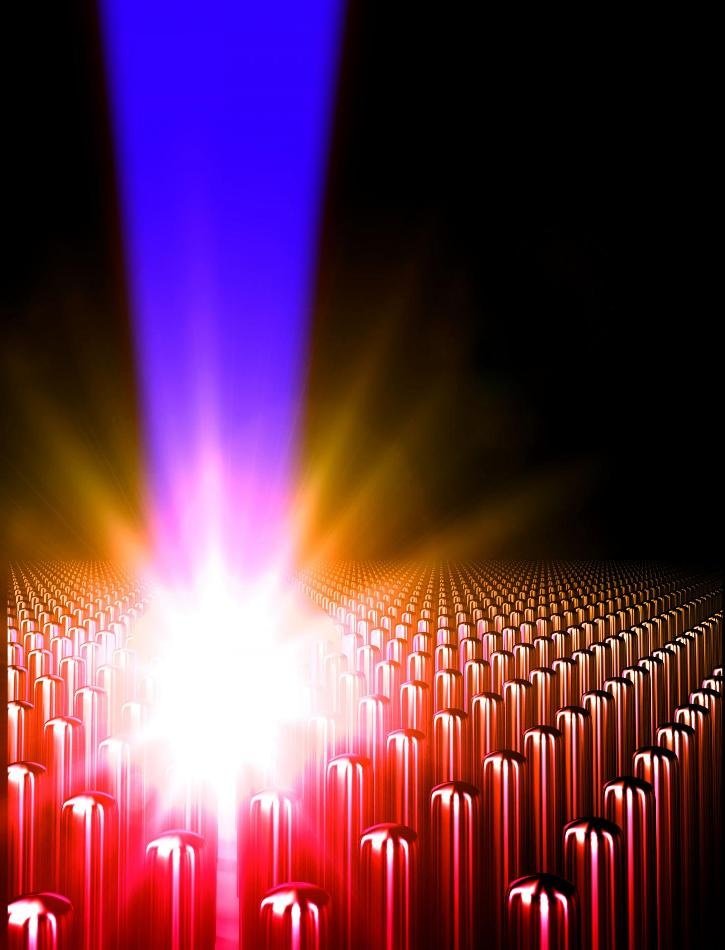Jan 12 2017
 Representation of the creation of ultra-high energy density matter by an intense laser pulse irradiation of an array of aligned nanowires. ( CREDIT - R. Hollinger and A. Beardall)
Representation of the creation of ultra-high energy density matter by an intense laser pulse irradiation of an array of aligned nanowires. ( CREDIT - R. Hollinger and A. Beardall)
The energy density contained in the center of a star is said to be greater than what is imaginable. Compared with the one atmosphere of pressure humans live with on Earth's surface, the star’s energy density is several billions of atmospheres.
Recreating these severe conditions in a laboratory would only be possible through fusion experiments using the largest lasers in the world, which are the size of stadiums. Recently, researchers at Colorado State University have conducted an experiment that offers a new path to generate such severe conditions, using much smaller, compact lasers that utilize ultra-short laser pulses irradiating arrays of aligned nanowires.
The experiments, led by University Distinguished Professor Jorge Rocca in the Departments of Electrical and Computer Engineering and Physics, accurately calculate the depth of penetration of these extreme energies into the nanostructures. These measurements were conducted by monitoring the characteristic X-rays discharged from the nanowire array, in which the material composition alters with depth.
Numerical models verified by the experiments predict that increasing irradiation intensities to the maximum levels, made possible by currently available ultrafast lasers, could produce pressures to exceed those in the center of the sun.
The research findings were published on January 11 in the journal Science Advances. They pave the way to obtaining unparalleled pressures in the laboratory using compact lasers. The research could also lead to new inquiry into high energy density physics; how light propagates at ultrahigh pressures, densities, and temperatures; and how highly charged atoms act in dense plasmas.
Producing matter in the ultra-high energy density system could inform the research of laser-driven fusion - using lasers to stimulate controlled nuclear fusion reactions - and to additionally understand atomic processes in astrophysical and severe laboratory environments.
The ability to produce ultra-high energy density matter with smaller facilities is very appealing to make these extreme plasma regimes more accessible for elementary studies and applications. An example of an application is the excellent conversion of optical laser light into bright flashes of X-rays.
The research was a multi-institutional effort led by CSU that included graduate students Clayton Bargsten, Reed Hollinger, Alex Rockwood, and undergraduate David Keiss, all working with Rocca. Also involved were research scientists Vyacheslav Shlyapsev, who worked in modeling, and Yong Wang and Shoujun Wang, all from the same group.
The paper was co-authored by Maria Gabriela Capeluto from the University of Buenos Aires, and Richard London, Riccardo Tommasini and Jaebum Park from Lawrence Livermore National Laboratory (LLNL). Numerical simulations were conducted by Vural Kaymak and Alexander Pukhov from Heinrich-Heine University in Dusseldorf, using atomic data by Michael Busquet and Marcel Klapisch from Artep, Inc.